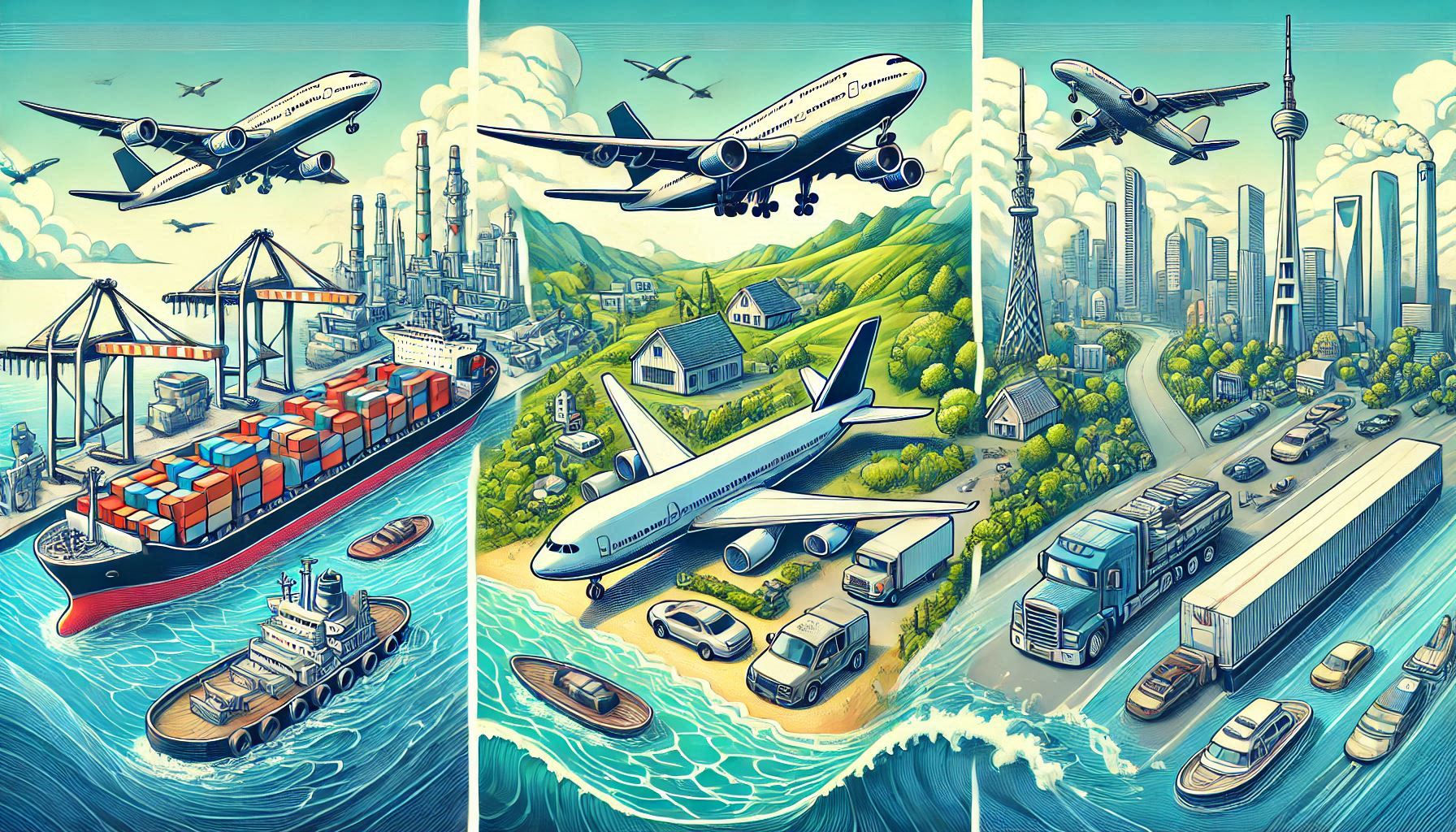Intermodal and multimodal transport refer to the use of multiple transportation modes to move cargo from its origin to its final destination. These modes may include road, rail, sea, and air transport, ensuring efficient and safe delivery. In this article, we will explore the significance of these transport methods and their advantages in global trade.
What is Intermodal Transport?
Intermodal transport refers to the process of moving cargo using multiple transportation modes while keeping the goods in the same container throughout the journey. This method involves ships, trains, trucks, or airplanes, but the cargo remains in a single, standardized container that is seamlessly transferred between different transport modes.
The key benefit of intermodal transport is that it simplifies logistics operations, reduces handling times, and lowers costs. Since the cargo stays in the same container, there is no need to unload and reload it at each transfer point, minimizing the risk of damage, delays, and additional expenses.
What is Multimodal Transport?
Multimodal transport is similar to intermodal transport, but with one key difference:
In multimodal transport, a single operator (carrier) is responsible for the entire transport process under one contract.
It may involve different transportation modes (truck, ship, plane, or train), and the cargo might be transferred between different types of transport units at each stage.
The main advantage of multimodal transport is its seamless management of complex international shipping processes. It helps reduce delivery time, shipping costs, and coordination efforts since one company oversees the entire logistics chain, including customs clearance and final delivery.
Key Differences and Similarities Between Intermodal and Multimodal Transport
Similarities
✅ Both methods combine multiple transport modes to move goods from the origin to the final destination.
✅ Both methods allow the use of standardized containers for cargo transport.
✅ Both approaches help reduce shipping costs and transit times.
✅ Both methods involve transport via road, rail, sea, and air.
Differences
Aspect Intermodal Transport Multimodal Transport
Cargo Handling Cargo remains in the same container throughout transit. Cargo may be transferred between different transport units at different stages.
Operational Responsibility Different companies may handle different transport legs. A single logistics provider manages the entire process under one contract.
Customs & Logistics Services Customs clearance and logistics may be handled separately by different providers. The multimodal carrier handles all logistics services, including customs clearance and delivery.
Advantages of Intermodal and Multimodal Transport

🚛 Cost Reduction:
By using a combination of transport methods, costs are reduced as the most efficient transport mode is used for each leg of the journey.
For example, long-distance transport by sea combined with short-distance trucking can be more cost-effective than using trucks alone.
⏩ Faster Transit Times:
Intermodal and multimodal transport optimize shipping routes to reduce delays and transit time.
Using multiple transport modes simultaneously allows for faster deliveries.
🔄 Simplified Logistics Management:
Multimodal transport allows businesses to ship cargo under a single contract, reducing coordination efforts.
It eliminates the complexities of dealing with multiple carriers.
📦 Greater Flexibility:
Companies can choose the most cost-effective and efficient transport method for each segment of the journey.
This flexibility allows cargo transportation to be optimized based on changing market conditions and logistics challenges.
The Role of Versk Shipping in Intermodal and Multimodal Transport
Versk Shipping plays a crucial role in providing integrated and well-coordinated intermodal and multimodal transport solutions.
🔹 End-to-End Logistics Management:
Versk Shipping takes full responsibility for the entire logistics chain, from pickup to final delivery.
🔹 Customs Clearance & Compliance:
The company ensures seamless customs clearance, avoiding delays and regulatory issues.
🔹 Innovative Transport Solutions:
Versk Shipping leverages advanced technologies and optimized transport routes for faster, safer, and more cost-effective shipping.
🔹 Reliable Global Network:
The company has an extensive network of trusted partners, ensuring efficient intermodal and multimodal transport worldwide.
By choosing Versk Shipping, businesses can ensure smooth and secure cargo transportation, while minimizing risks, reducing costs, and optimizing delivery times.
Conclusion
Understanding the difference between intermodal and multimodal transport is essential for businesses involved in international trade and logistics. While both methods enhance efficiency and reduce costs, multimodal transport provides a fully integrated, single-contract solution, while intermodal transport focuses on containerized shipping across different carriers.
Versk Shipping stands out as a trusted and experienced logistics provider, helping businesses optimize transportation costs, improve efficiency, and ensure seamless international trade operations.

